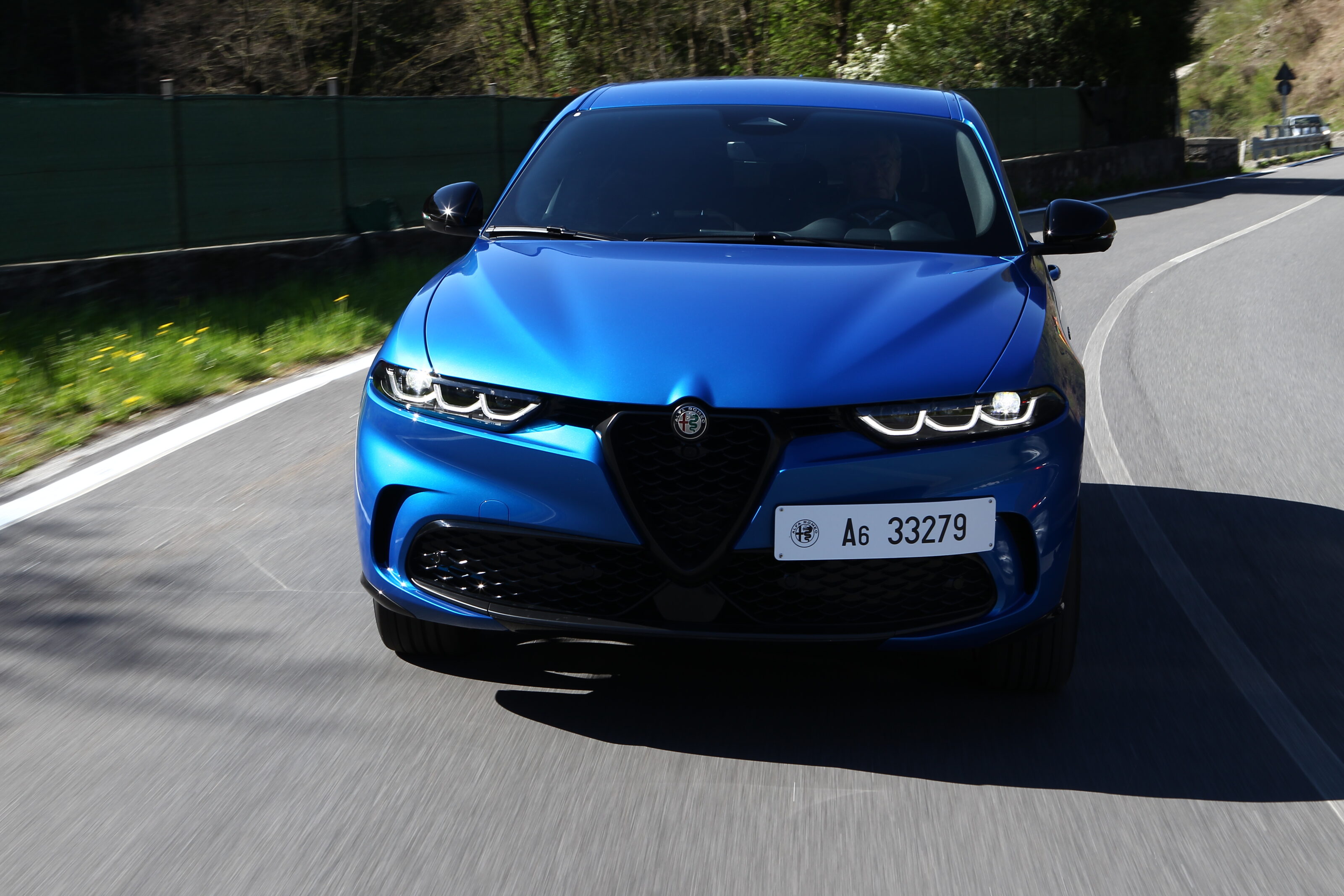Score breakdown
Things we like
- Bella macchina good looks
- Inviting, well kitted-out cabin
- Decent performance and economy
Not so much
- Massive turbo lag
- Mushy steering
- Indifferent handling
UPDATE: Australian pricing revealed for Alfa Romeo Tonale
The incoming new Alfa Romeo Tonale is now available to order in Australia, priced from $49,900 with a petrol-electric powertrain.
Two variants will be offered from launch – the Ti and top-shelf Veloce – and first deliveries should arrive by February 2023. Get all the details at the link below.
The story to here
May 2022: Alfa Romeo Tonale, international first drive
First published in May, this story is unchanged.
The 2022 Alfa Romeo Tonale is the brand’s first model to have full access to the Stellantis parts bin. And as an SUV, it should in today’s commercial environment be a licence to print money.
As it happens, Alfa needs plenty of money to fund the transformation from DOHC fame and quattrovalvole emotion to anonymous inverters and nondescript performance electronics.
The Tonale is in fact the final old-school product to be released before the E-age begins late next year with a set of four dedicated electric STLA architectures. The newest addition to the range is based on the oldest platform the engineers could find, namely the Fiat-Chrysler CUSW components set first introduced in 2010 and used until 2020 in the Alfa Giulietta.
Featuring MacPherson struts all round, this front-wheel-drive matrix was for the Tonale fitted with a unique cryptographic element that relies on blockchain technology to record and memorise the entire vehicle history from assembly line to shredder.
Like the Stelvio, the Tonale is named after a mountain pass in the Dolomites. “No more peaks and summits from now on,” promises the CEO Jean-Philippe Imperato, formerly with Peugeot, grinning broadly.
“Our third SUV, which is currently ghosting through the media, will certainly not be named as rumoured after an Italian lake, mountain, city or region.”
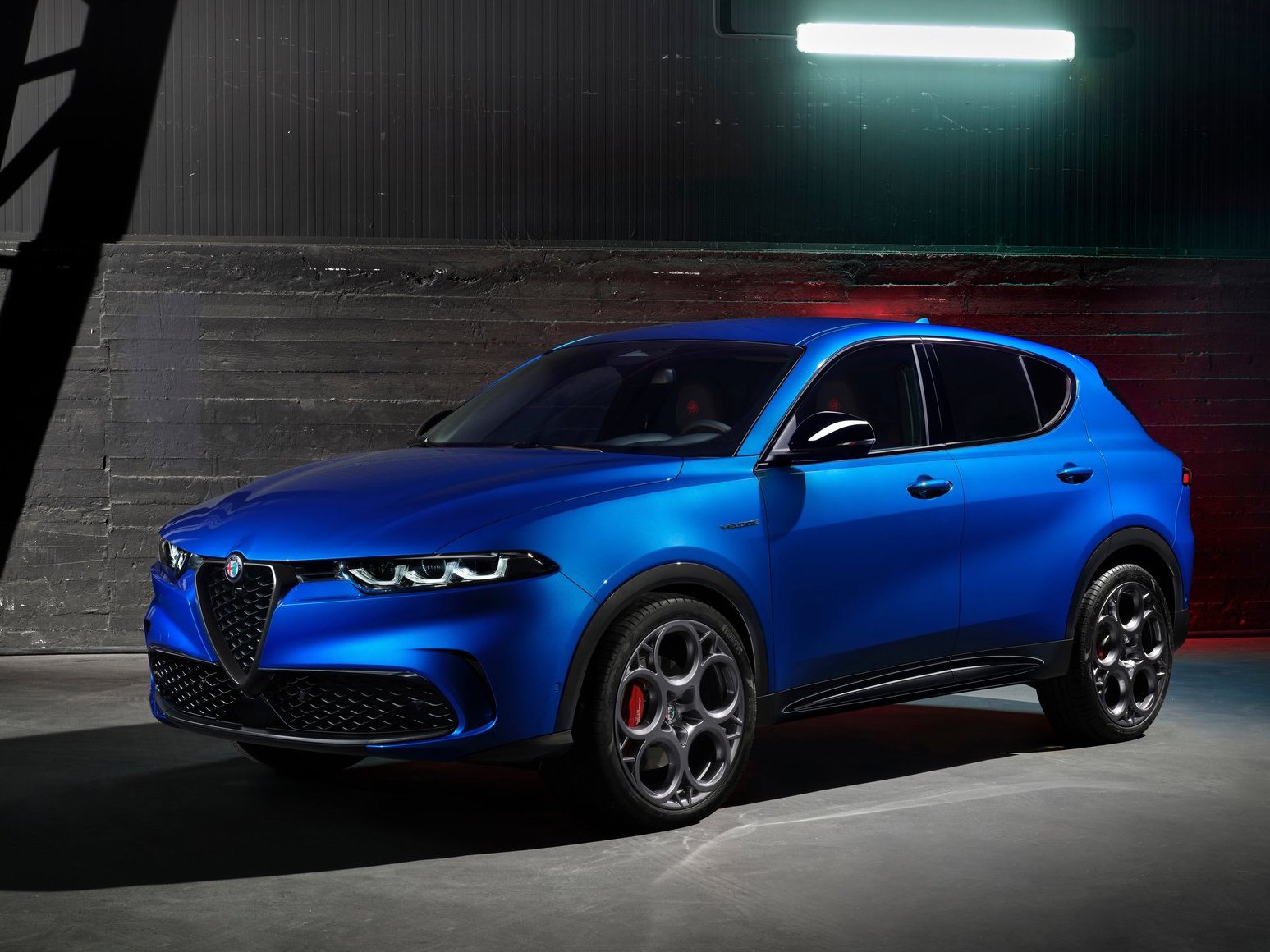
While the Tonale shares its genetic disposition with the Jeep Compass, its smaller T-Roc-sized stablemate due in 2024 taps the second-generation eCMP layout originally conceived by Peugeot-Citroen. This model will be offered with a choice of petrol and electric drivetrains.
According to a source from within Alfa, the plan is to combine a small, compact and light 55kWh lithium battery with a single motor that drives the front wheels with up to 105kW and 270Nm of electric power. Pricing is expected to start in the low €30K region.
But back to the Tonale, which lands a clever world-first feature in the shape of a non-fungible token (NFT) that locks the car and its data history in the blockchain. From the very first ignition spark, this device documents all relevant information, facts and moves including accidents, vandalism, repair work, tuning, change of ownership, and aftermarket add-ons, as well as significant wear and tear.
A telematics module records the mileage, cameras capture any maintenance activity, and a black box monitors the charge cycles and the user behaviour with tamper-proof technology. The transferable system puts an end to the crime of turning back the odometer, makes the service booklet electronically unforgeable, consolidates the resale value and therefore is an essential element of the newly introduced unconditional five-year warranty.

With prices starting at €35.5K (AU$52,375), the Tonale takes aim at the BMW X1, Audi Q3, VW Tiguan, Ford Kuga and Mazda CX-30 to name only the most prominent rivals. The Jeep Compass it shares DNA with costs over ten per cent less, but the Alfa interior is much more advanced, and then there is of course that hard to quantify image bonus.
Derived straight from the acclaimed concept car, the newcomer from Arese exudes plenty of flair, chic, style and italianitá while offering tangible benefits like a large 500-litre boot, enough space for four adults, straightforward ergonomics and plenty of assistance systems.
Depending on the equipment pack (on offer are Super, Sprint, ti, Veloce and Edizione Speciale), the specification ranges from complete to lavish. No money in the world will however buy a manual transmission, all-wheel drive, sunroof or head-up display.
Some markets still need the 97kW 1.6-litre diesel, but the bulk of the model mix will be 97kW and 119kW hybrids featuring the latest 1.5-litre petrol unit. The hybrid module adds a 48V system, a 20kW electric motor good for an extra 55Nm, and a 0.77kWh battery to the tally.
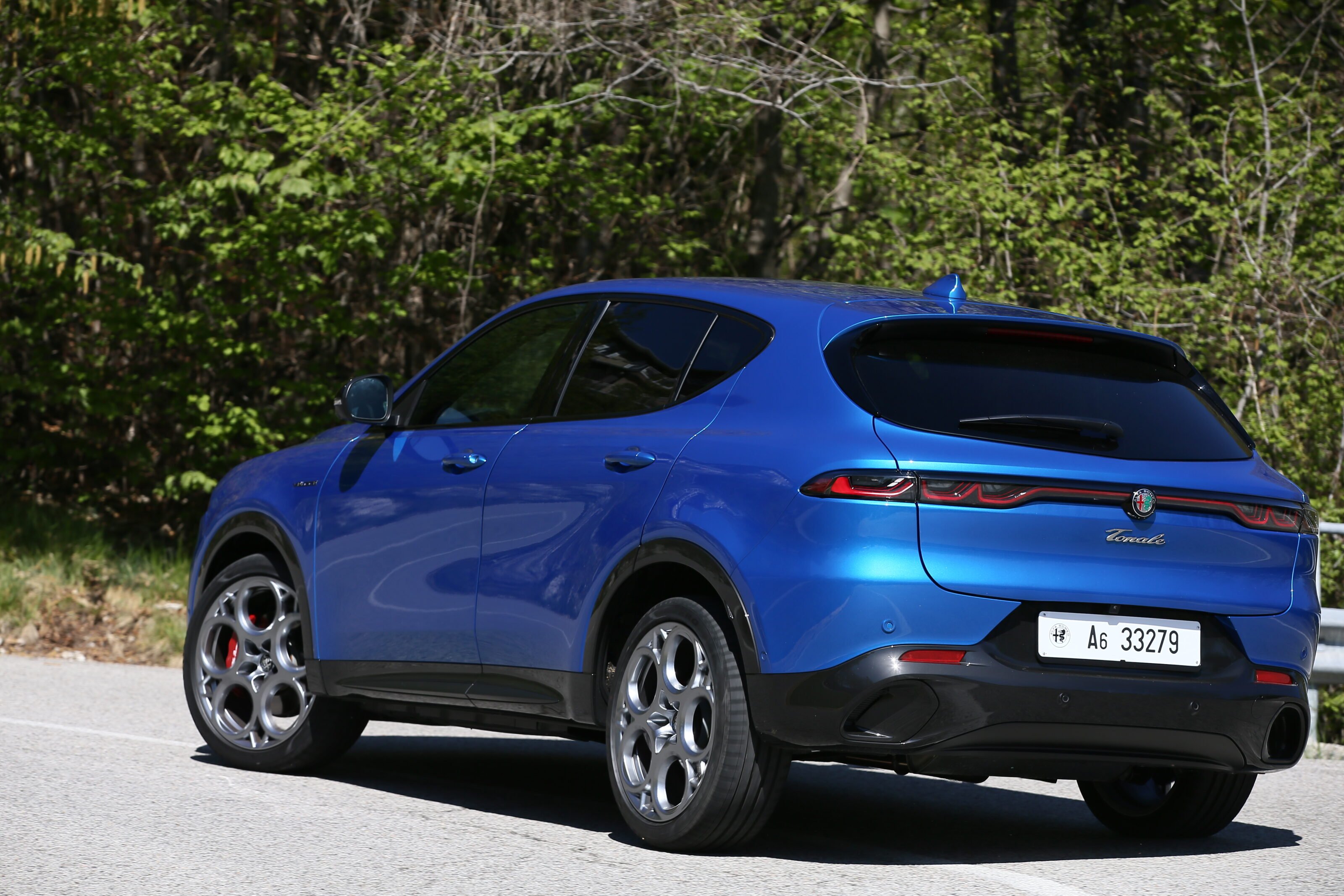
This extended volt and watt configuration enables the car to take off in total silence and to travel a couple of clicks in zero-emission mode. Since the engine-off stamina depends on the state of charge of the tiny secondary energy cell, the exact e-range is a bit of a guessing game, but the consumption (6.3L/100km) does benefit without a doubt from the hybrid support.
The battery weighs 13.5kg, sits underfloor between the seats and is charged purely by brake energy recuperation. In combination with a seven-speed dual-clutch automatic transmission, the dual-heart power unit accelerates the Tonale 1.5 VGT from 0-100km/h in 8.8 seconds. The top speed is a perfectly adequate 210km/h.
Alfa had originally planned to offer its six-eyed summit wrestler right from the beginning in hybrid and plug-in hybrid (PHEV) all-wheel-drive form, but after sampling the first prototypes, commendatore Imperato gave the mules the thumbs down for a distinct lack of grunt and go.
This explains why the upgraded PHEV version is six months late but with a beefed-up system output of 205kW it may well be worth the wait. While the petrol engine of choice is a frugal 1.3-litre unit, the battery-fed e-motor that drives the rear wheels develops a healthy 90kW (10kW more in overboost mode).
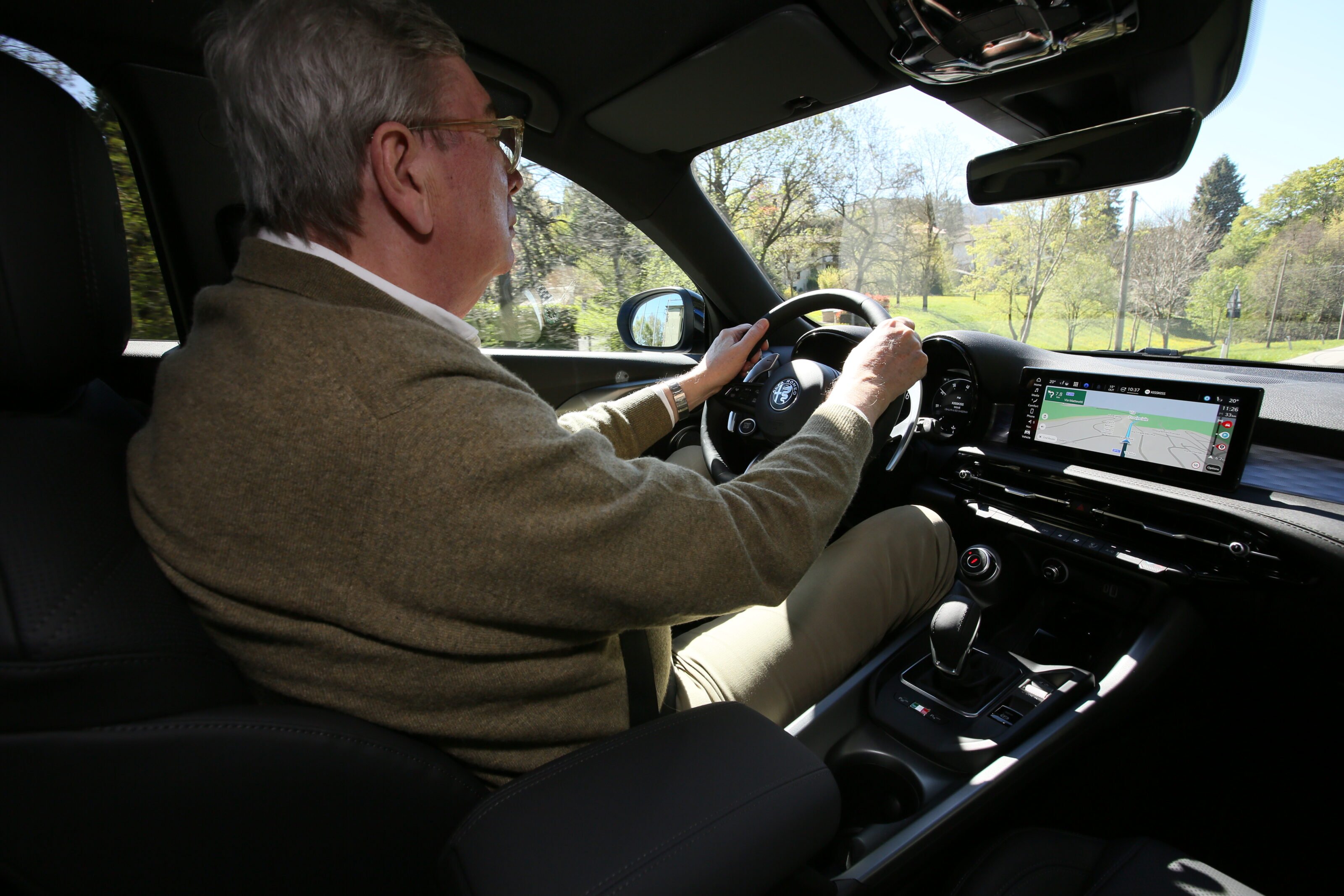
Backed by a feisty 550Nm of twist action, this kraftwerk can reportedly beam the 1600kg crossover from 0-100km/h in 6.2sec. It allegedly takes only 2.5 hours to fully recharge the 15.5kWh battery. The electric range varies between 60km and 80km depending on the respective cycle. Prices are expected to begin at €52.5K (AU$77,500).
In 2021, Alfa´s worldwide sales totalled 60,000 units with America taking roughly 50 per cent – a far cry from the 200,000 cars envisioned by the late Sergio Marchionne. Whereas the Italo-Canadian CEO would have launched replacements for the charismatic 8C, GTV and the coveted Spider before refocusing on volume models, Imperato chose a much more pragmatic approach.
“At Stellantis, every single model must be profitable. Losing money on a halo car even if it boosts the brand image is an absolute no-go. Before Tonale, Alfa had only the Giulia and the Stelvio. Great cars for sure, they compete in a league dominated by the Germans. Furthermore, they are too pricey for Alfisti who would like to trade up from a Giulietta, let alone the MiTo.
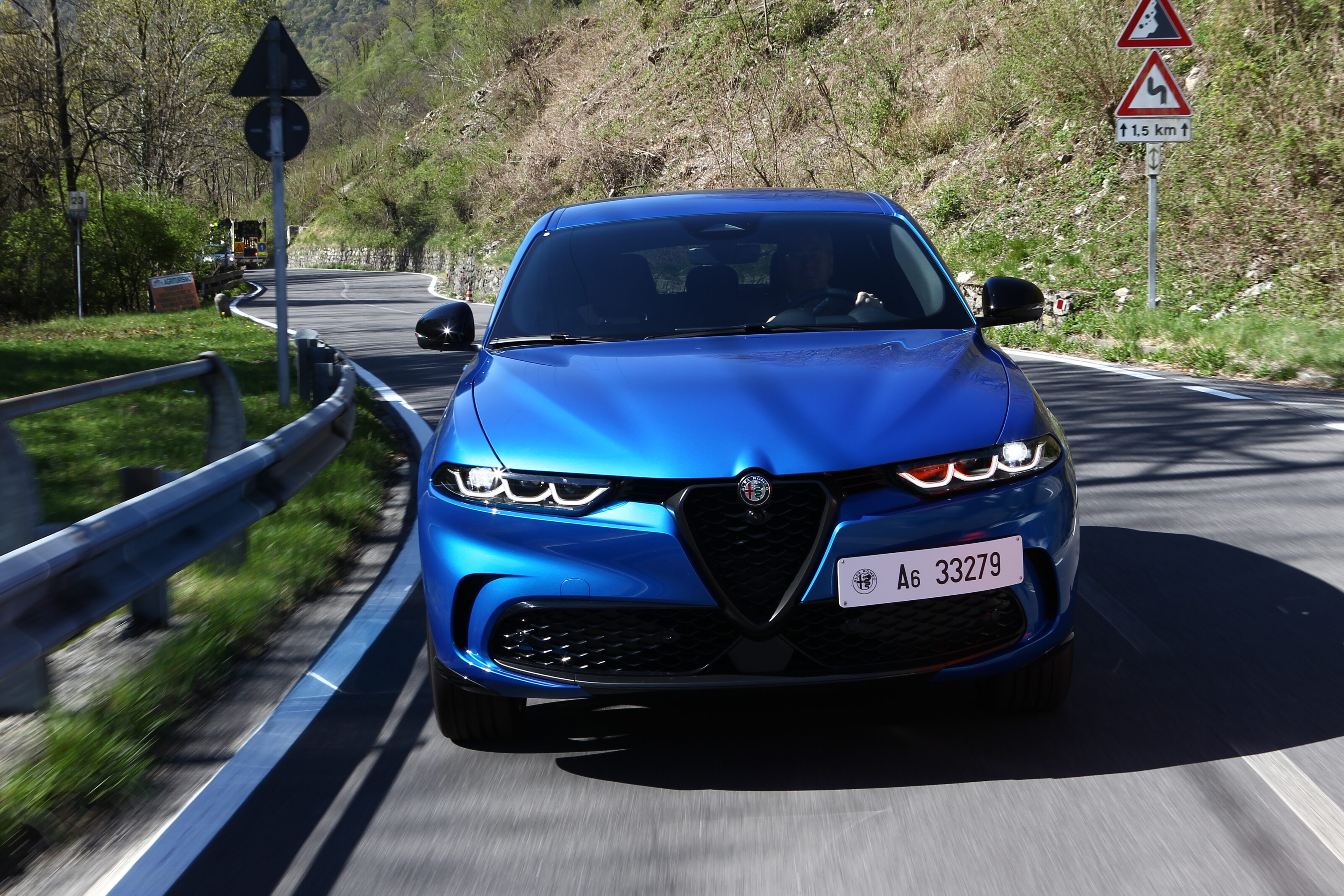
“Let me be quite clear about this: the portfolio we are working on will include more and more affordable products. Having fixed the quality issues, the next priority is to kick up the resale values. Lower and absolutely transparent running costs are the key to commercial success.”
Imperato may look a little older than the 56 years stated on his ID, but he is still passionately racing touring cars (often with Carlos Tavares) and his favourite track is the Nordschleife, which he has lapped more often than any other circuit.
That’s why he is relentlessly evolving the brand’s trademark cuore sportivo, the dynamic strengths of the model range and the head-turning design.
“But before we reach for the stars, we must get the basics in order. I could for instance build 80,000 to 90,000 Tonales which would get us properly restarted. The market is definitely ready for more aggressively priced, indisputably attractive Alfas. That’s why the small SUV I mentioned earlier is only a first step towards an even brighter future.
“There is more to come, like a compact five-door hatch positioned alongside the Opel Corsa-e and the Peugeot e-208. Make no mistake, a proper Alfa Romeo is not defined by size but by the way it looks, feels and drives.”
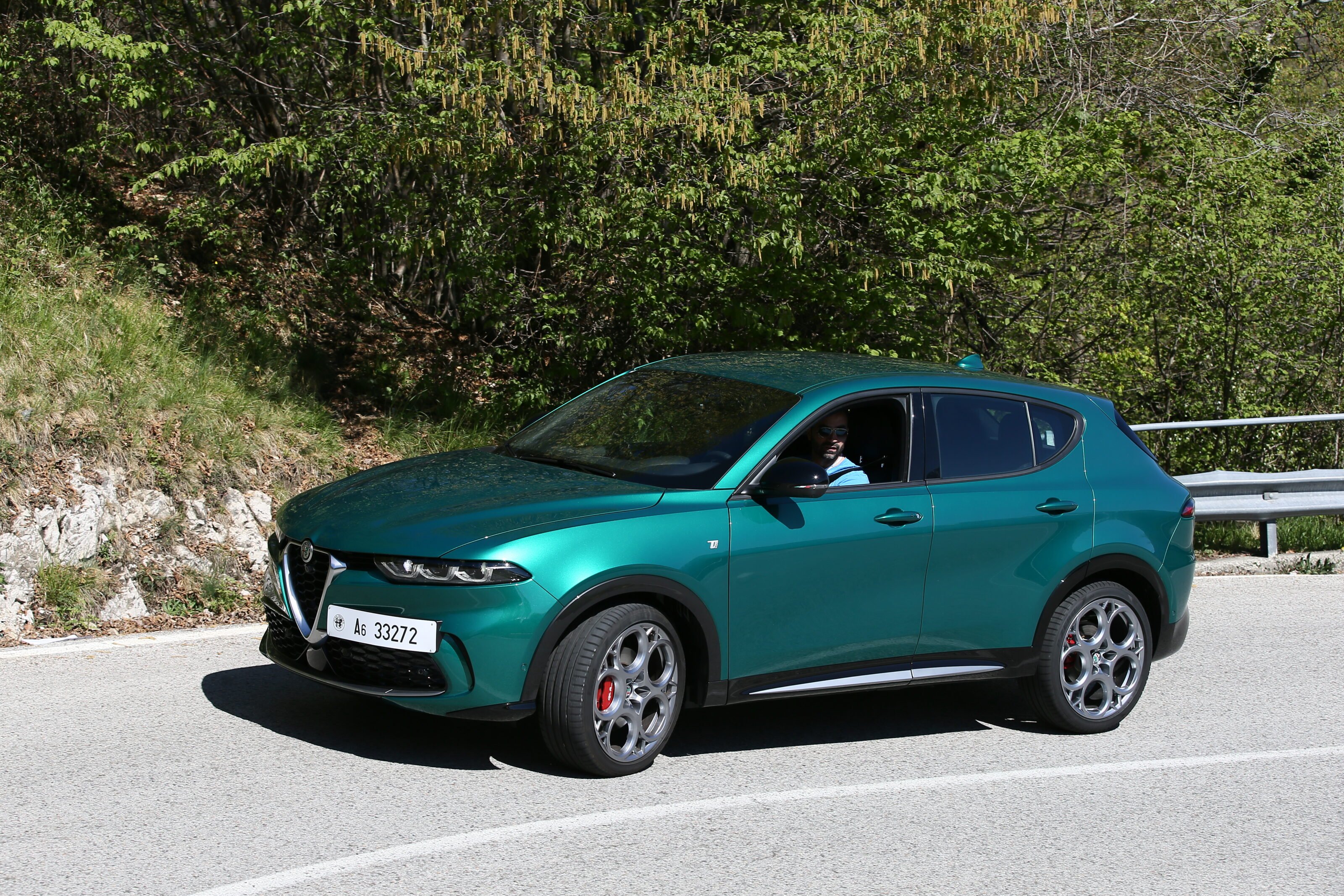
Before we hit the road, chief engineer Daniel Guzzafame promised a memorable day in a memorable car, an Alfa capable of meeting or even exceeding everyone’s expectations.
Wishful thinking? The Misano Blue specimen certainly did look appealing: 20-inch telephone dial alloy wheels, Brera-inspired triple headlights, a large scudetto (shield) complemented by the trad dei baffi moustache, not to forget that long and sleek silhouette even though it sits on a relatively narrow track.
The interior oozes style and class. Its main instrument display houses a speedometer and rev counter in analogue and clearly calibrated form, which is an obligation for every Alfa. The fixed centre touchscreen is too far away for tall drivers, but at least the menu is logically structured, and the high resolution is excellent.
Other heart-warming items are the XXL shift sickles inspired by Valtteri Bottas’ F1 cockpit, the starter button on the steering wheel and the stubby quickshift gear selector. Conspicuous by their absence are the overboost button, E-drive selector and bi-modal exhaust.

The cabins of many previous Alfas – including the pre-facelift Giulia – were sombre and barren chambers trimmed with blackish cheapo surfaces, short of substance and lacking a clear brand identity, sporting ho-hum ergonomics and suffering from persistent connectivity issues. If the Tonale is anything to go by, all that is history now.
Materials are of top-shelf quality, the fit and finish leaves nothing to be desired, the software is positively up to date, and the cabin ambience matches the ambition of the marque at long last. The seats are comfortable and supportive, and the adjustable steering wheel connects both hands to the road like a telepathic roundel.
Only the DNA drive mode selector is positioned out of sight and almost out of reach somewhere close to the driver’s right shin. Normal, Dynamic and ESP Off modes function the way they do in other Alfas, but Advanced Efficiency is unique to the hybrid. Whenever possible, it will select one of six e-drive programmes that include boosting, creeping, queuing and parking.
The chosen route around Lake Como is perfect for tourists but a nightmare for motoring journalists. The three staggered speed limits – 30, 50 and 70km/h – are heavily enforced, the dense traffic turns the nature reserve into a rush-hour testbed, and the roads are too narrow and winding for any car to stretch its legs.
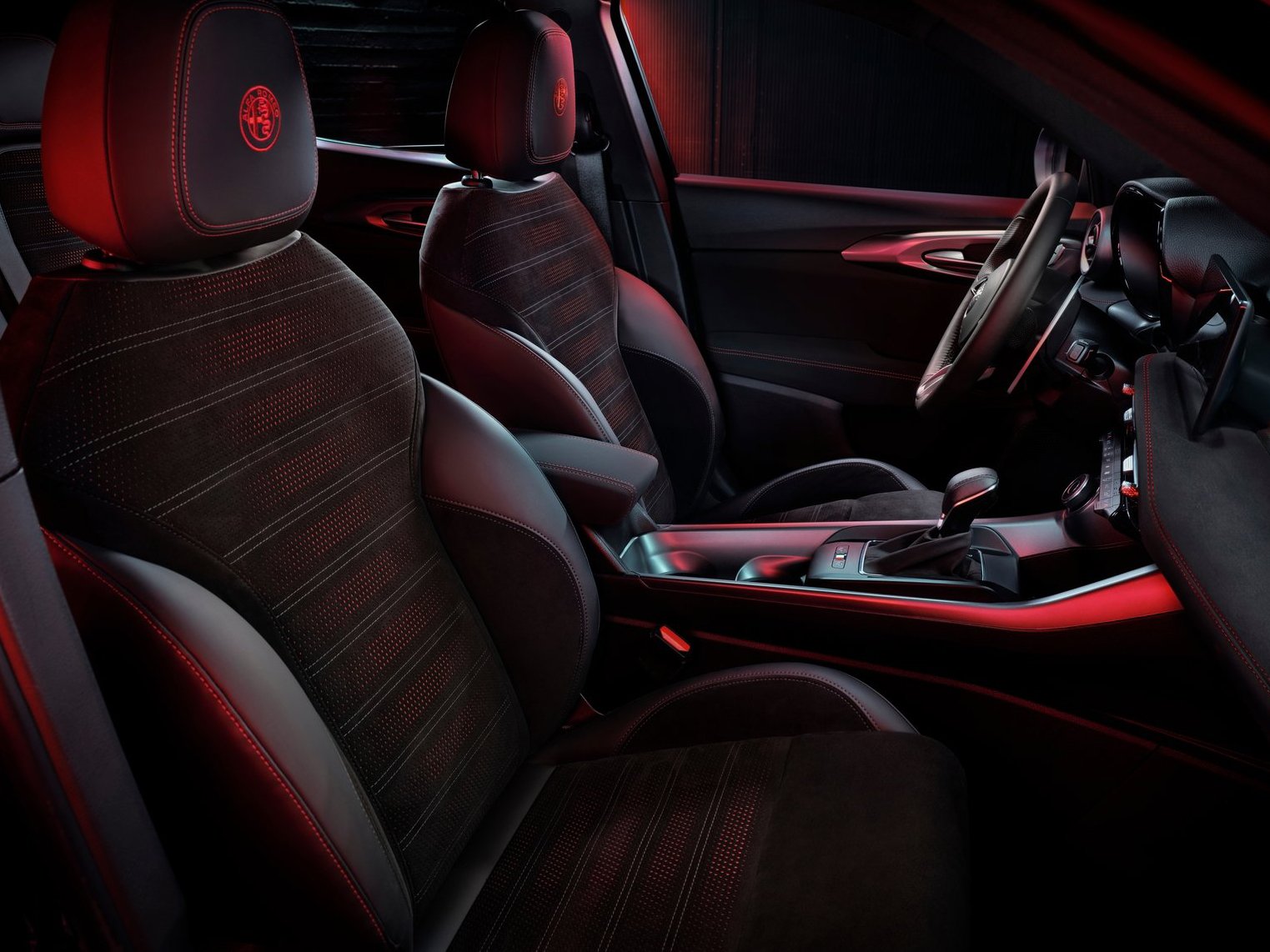
Thus handicapped, we can’t tell you for instance how the Tonale performs on the autostrada, through high-speed esses and when accelerating hard above 120km/h. We know for sure though that the commendably direct steering feels disappointingly mushy around the straight-ahead position and during the initial turn-in phase.
The self-centring effect is too pronounced, the effort is too light and detached in Normal, and the turning circle is too big. Things only improve in Dynamic and above 90km/h when the helm starts to get interested, tightens the line, speeds up the flow and sharpens the feedback. The Alfa guys listened, nodded and claimed it’s a quick software fix.
Still on the debit side, we found it hard to fall in love with the drivetrain. There may be extra power and torque on tap when you need it, but the driver cannot actively summon it, and since the boost effect is available in any gear, at any revs and at any speed, it feels at best like a tailwind but never like a wham-bang afterburner.
The worst flaw by far is the sticky, sedate throttle response. Hold the revs at 4000rpm with the gear selector in D, then floor the accelerator, and you will have to count to three before the full forward thrust breaks cover. Somehow, the dawdling e-drive and the indisposed variable-vane turbocharger don’t see eye to eye.
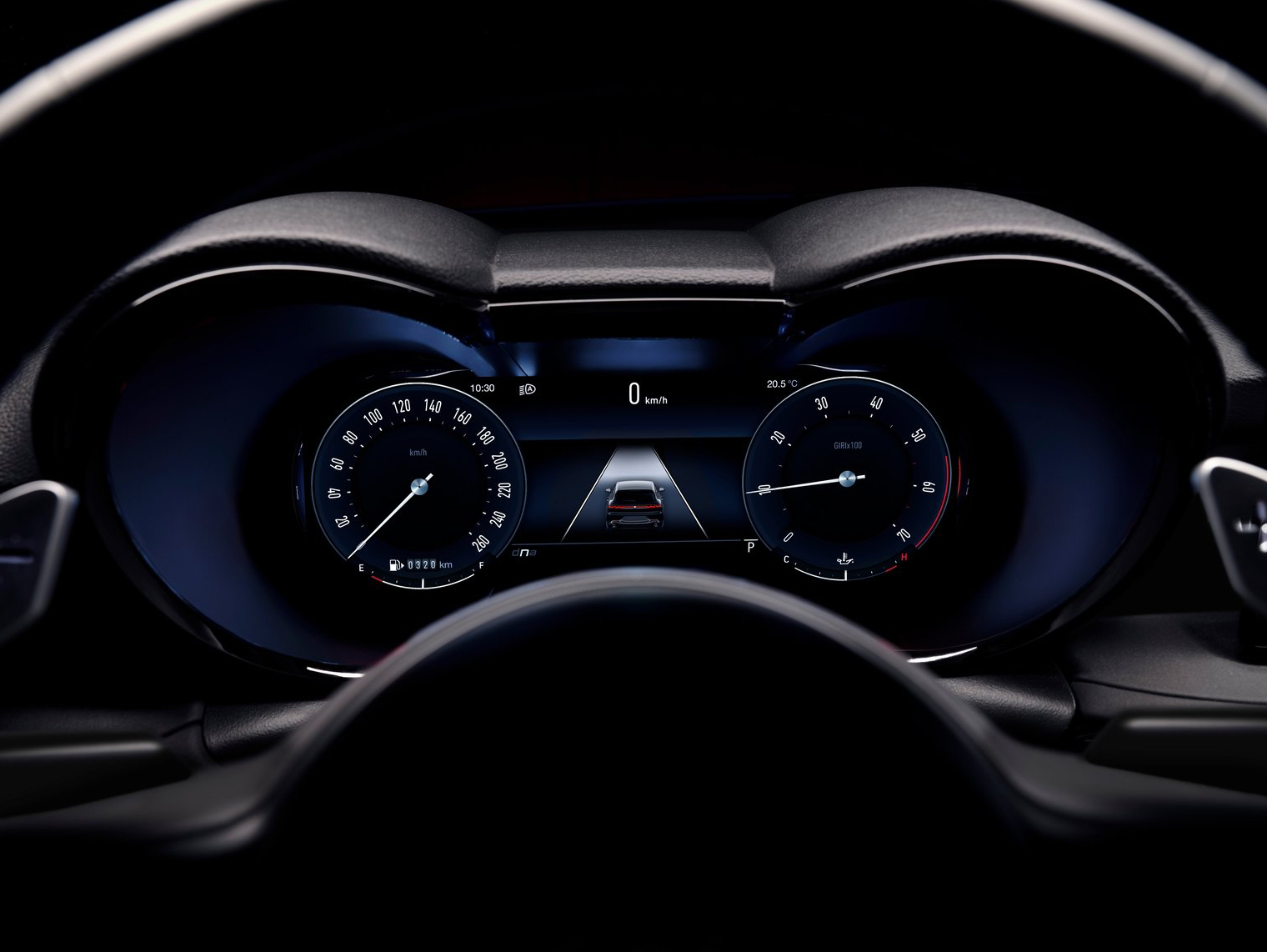
Adding insult to injury, the dual-clutch transmission allows itself too much full throttle clutch slip, thereby contradicting its fast-shifting, quick-acting working ethics.
Normally, 20-inch Pirellis don’t bode well for a car’s low-speed ride, its tramlining habits and torque steer behaviour. In this case, however, the fat rubber, the adjustable dampers and the independent suspension muster enough compliance to ride out all but the very worst vagaries of the ancient northern Italian turf.
Even rough-edged potholes and anaconda-size transverse ridges won’t throw this Alfa completely off-kilter. At the same time, body roll is neatly controlled, the electronic diff lock masterminds the torque flow with aplomb, and the loose ASR/ESP calibration leaves enough room for playing. Except that those 119 kilowatts have apparently only just surfaced from hibernation, and not even a mix of low gear and high revs can stimulate the envisaged Grand National agility.
In the Tonale, you are always better off in a taller ratio because riding the massive torque surf easily beats frantic late upshifts. Traction is not an issue in the dry, and the cornering grip is reassuringly strong, but the somewhat nose-heavy handling is a bit too passive and uninspiring for a car of such pedigree.
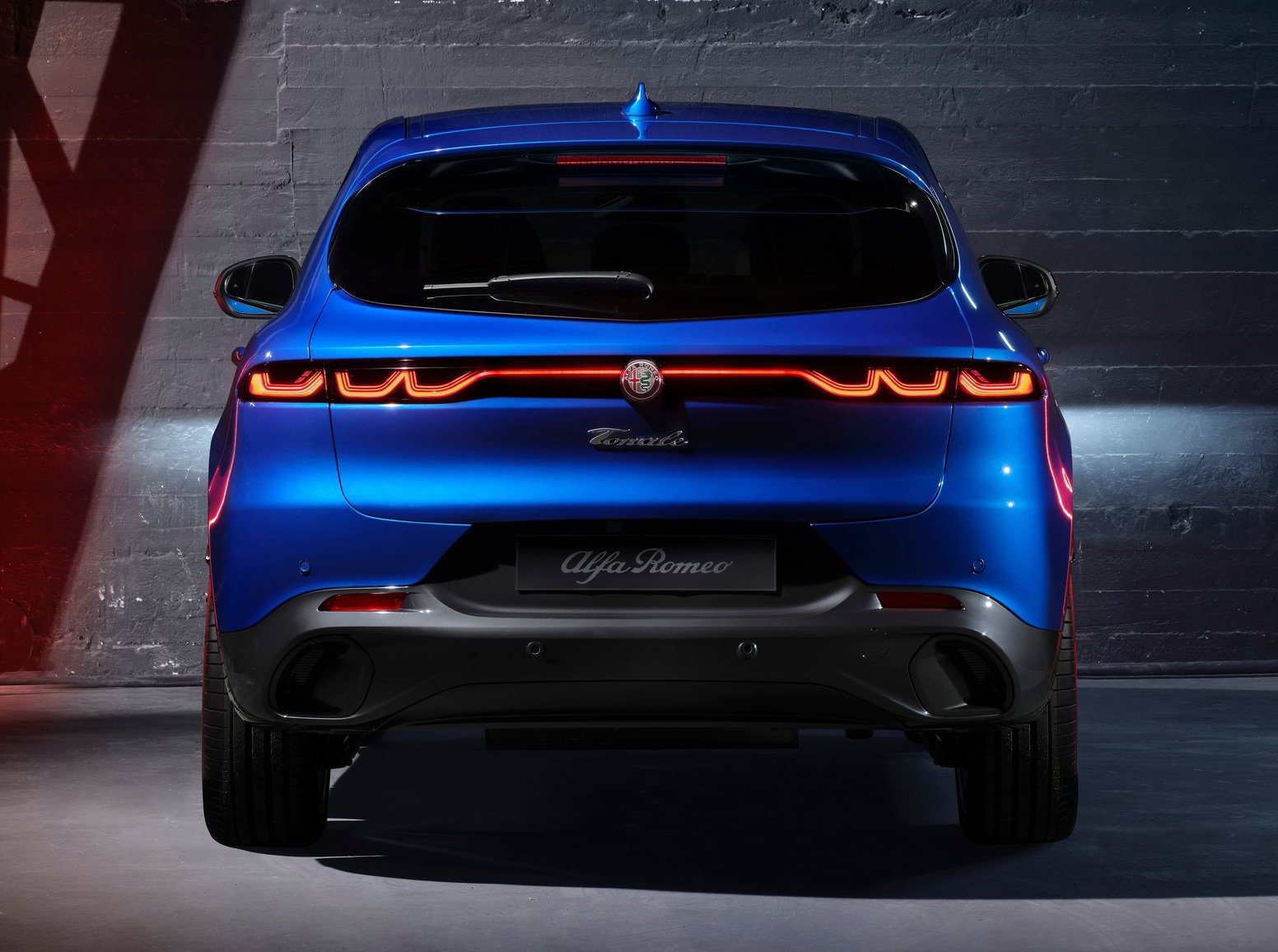
Brembo brakes – inner-ventilated rotors up front, solid discs in the rear – perform with aplomb. The transition from mild regenerative deceleration to full hydraulic stopping power is absolutely seamless and progressive. Dive is well suppressed, fading was never an issue, and the action is at all times easy to modulate.
The 16-valve engine operates according to the Miller Cycle, which means that the intake valves close late to cram as much fuel-air mixture as possible into the combustion chambers. Sadly, the four-cylinder does not really sound like an Alfa, and it is neither particularly smooth-running nor eager to rev.
True, the Tonale has a lot going for it – fully adaptive matrix headlights; Alexa, Android Auto and Apple CarPlay; TomTom sat-nav and a Harman Kardon sound system; Level 2 autonomous driving and plenty of electronic aids.
But its Alfa-ness is strangely underdeveloped and needs more TLC, ideally before the PHEV arrives later in the year.
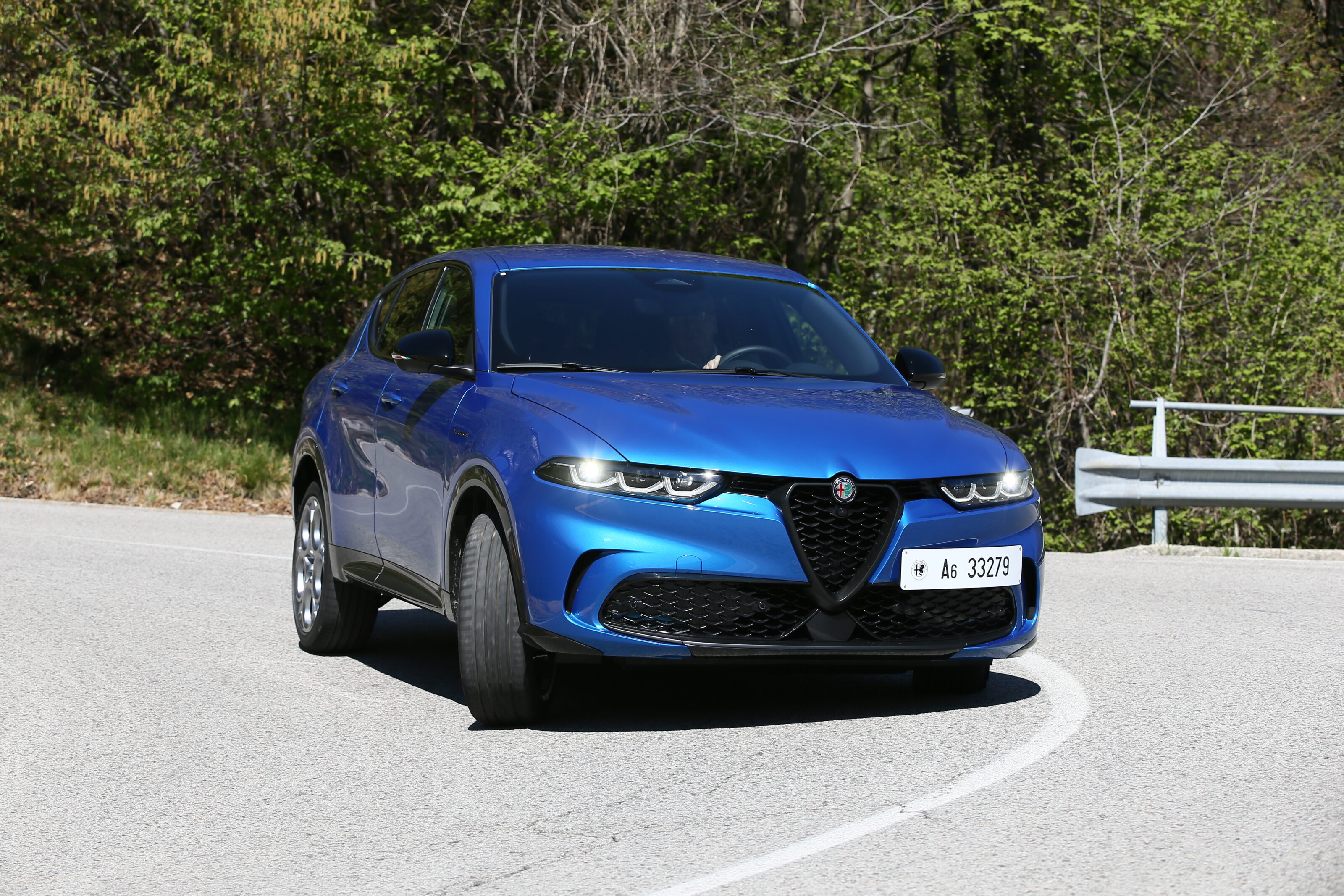
“Between now and 2030, Alfa Romeo will launch a new model every year,” states a beaming Imperato. “The cycle plan until 2025 is fully validated and funded. I cannot provide you with a PowerPoint presentation on what’s coming next, but you will not be disappointed, and that’s a promise.”
If the most recent moves pay off, the brand will eventually return to the upper premium segment, perhaps even with a flagship good enough to rock the establishment. We are currently working on two or three emphatically sporty and dynamic models which can do 0-100km/h in under three seconds, without breaking into Maserati territory.”
And how about plans for Formula 1? According to the grapevine, Audi is courting Sauber to team up for the 2026 season.
“F1 is a perfect match for our vision of the future, but these are not the right times for a long-term commitment,” says Imperato.
“I’d rather evaluate the deal on a yearly basis.”
Score breakdown
Things we like
- Bella macchina good looks
- Inviting, well kitted-out cabin
- Decent performance and economy
Not so much
- Massive turbo lag
- Mushy steering
- Indifferent handling
We recommend
-
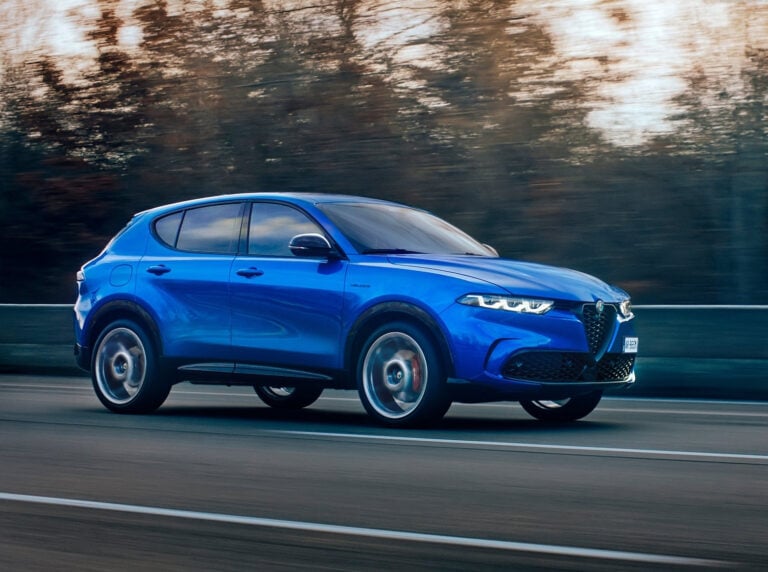 News
News2023 Alfa Romeo Tonale revealed
Alfa Romeo’s new little SUV has been unveiled with electrified powertrains and new-to-brand technology
-
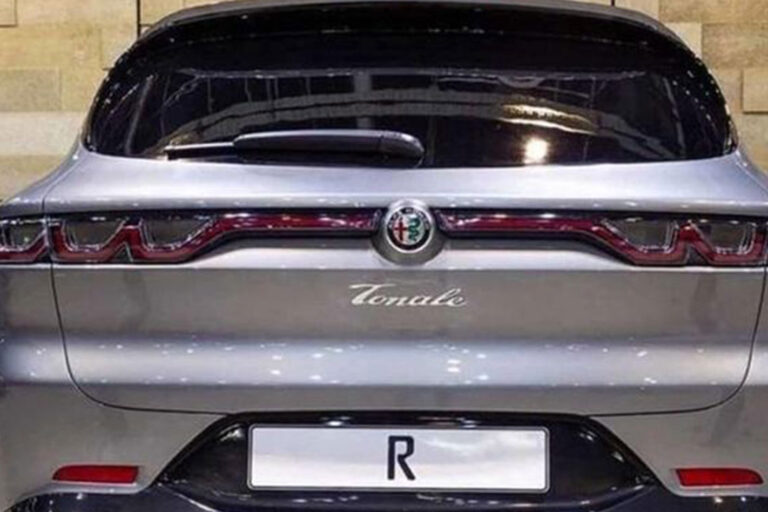 News
NewsAlfa Romeo Tonale teased in 'Abbey Road' tweet
Only a handful of days out from its reveal, the Tonale has been teased again
-
 News
NewsNew car calendar 2026: All the new cars coming to Australia next year
Here’s the WhichCar by Wheels guide to all the new cars that will launch in Australia in 2026. Check back in regularly for updates...

